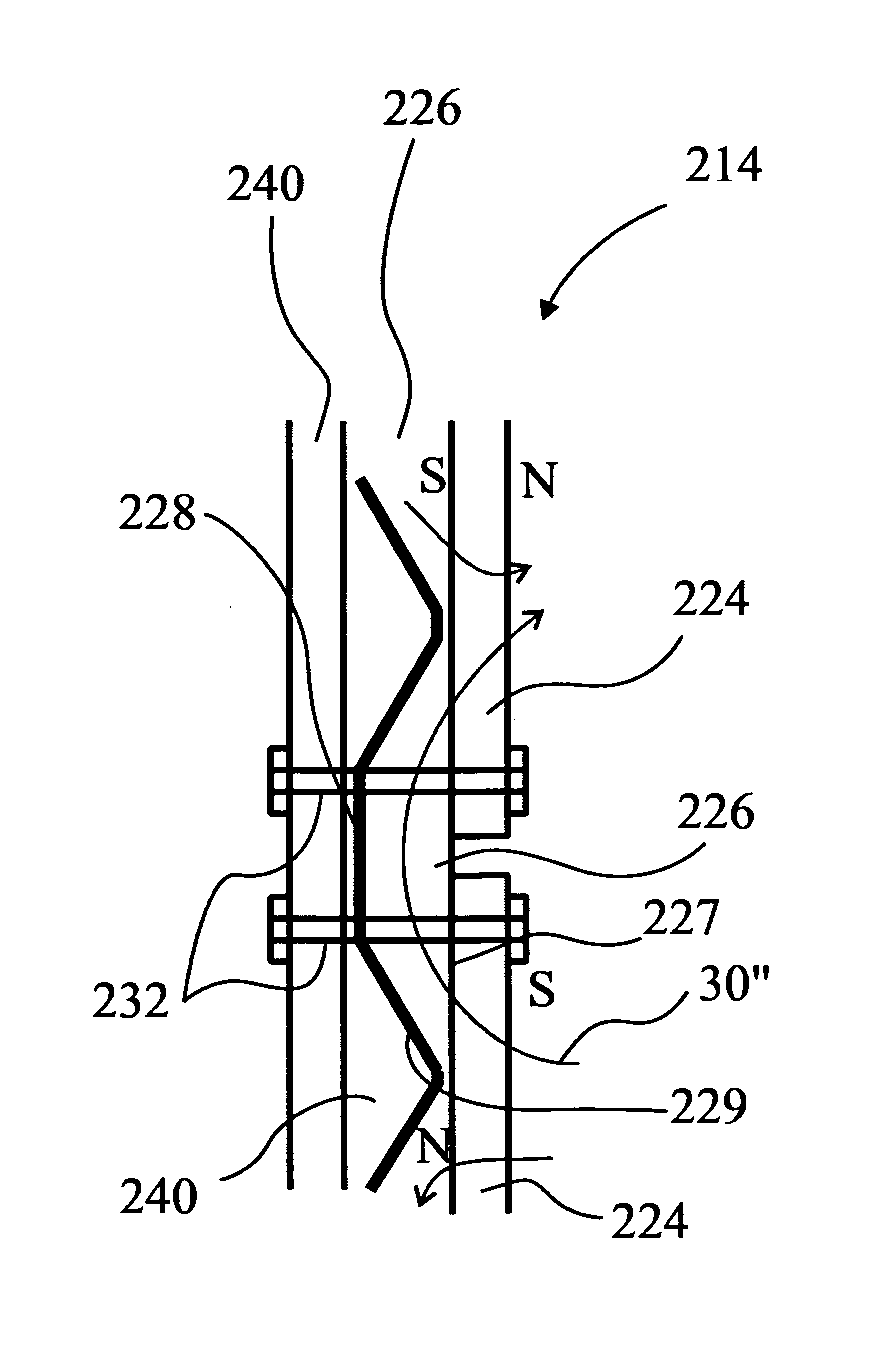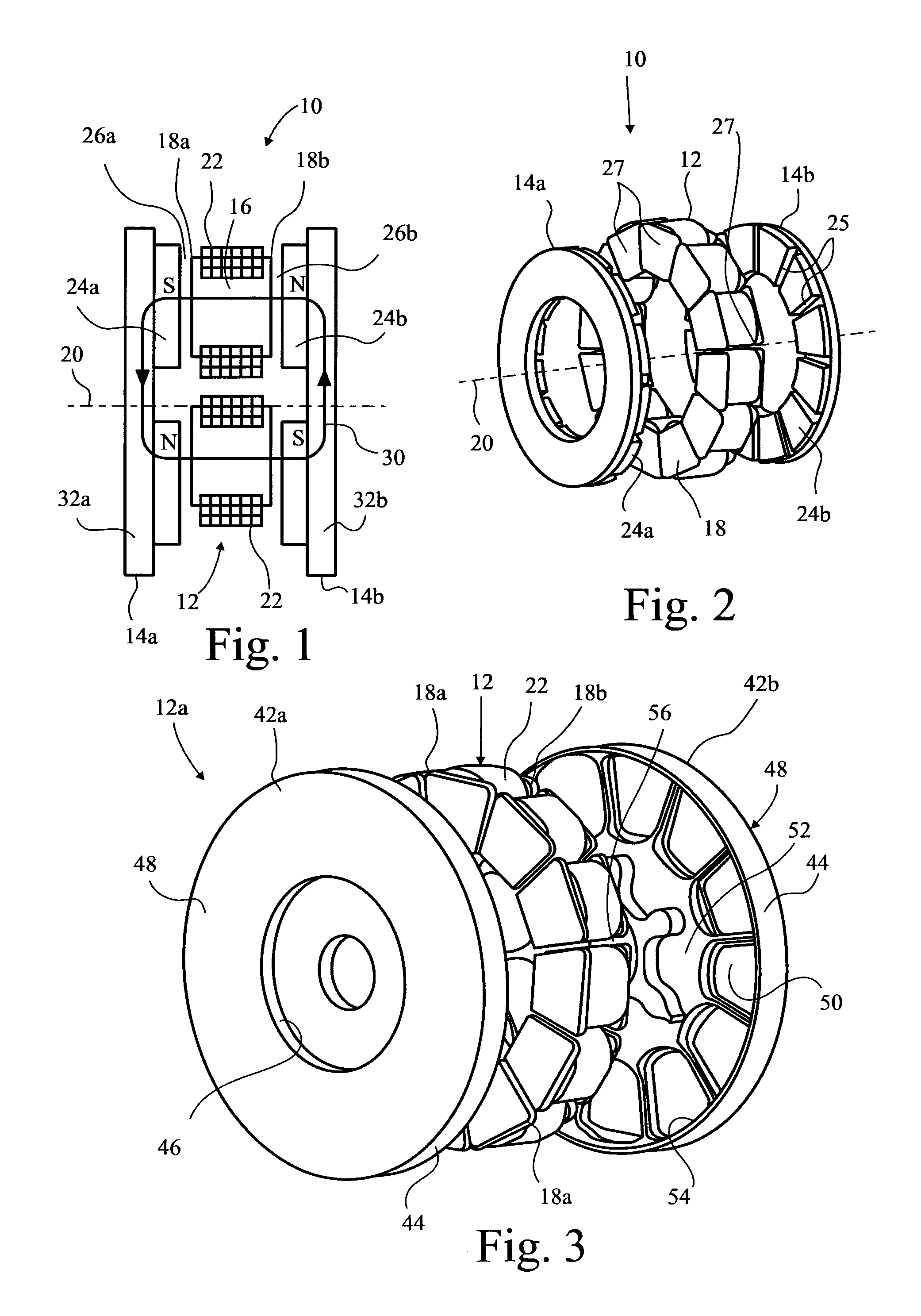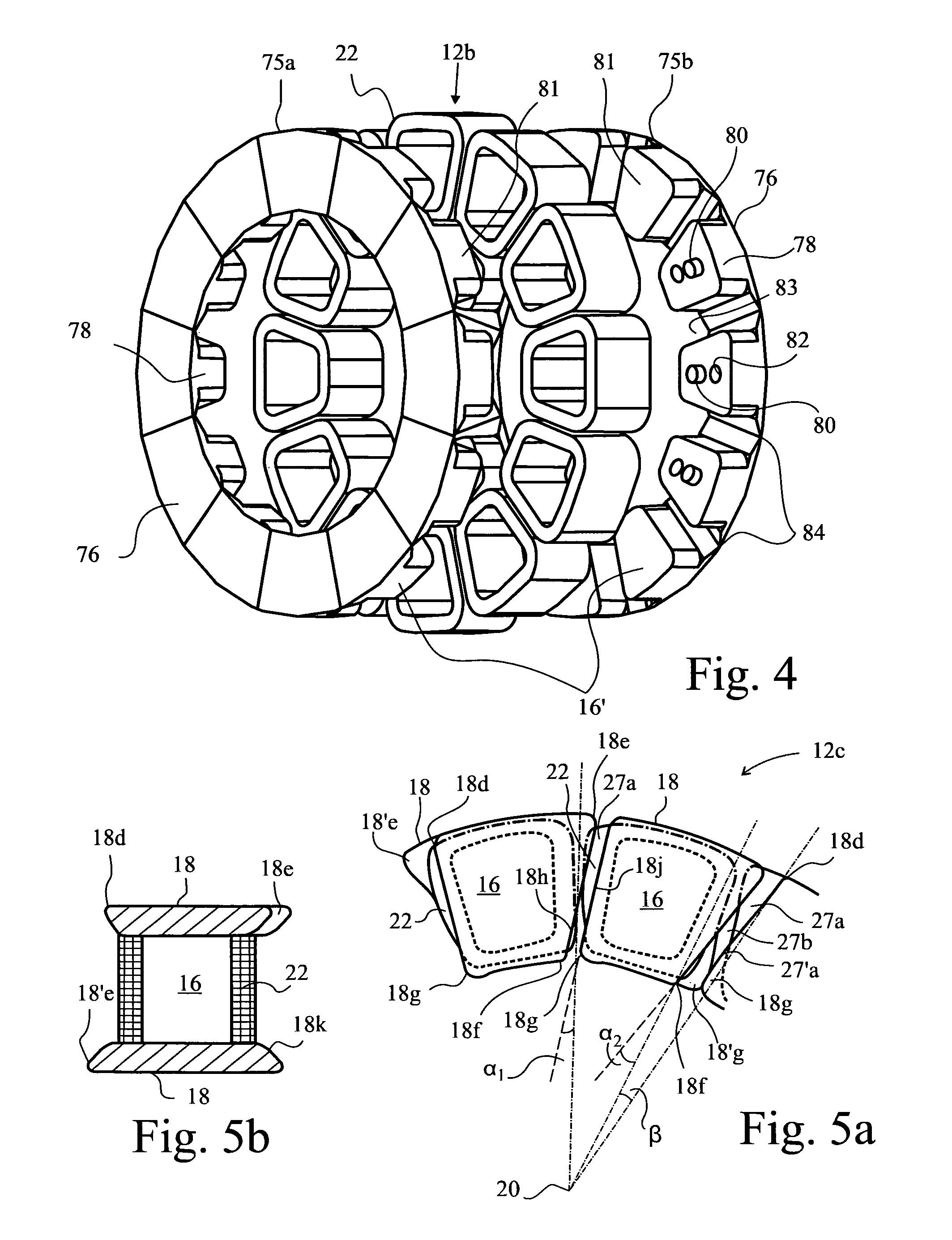Electric machine—flux
a technology of electric machines and flux rods, applied in the direction of mechanical energy handling, magnetic circuits characterised by magnetic materials, shape/form/construction, etc., can solve the problems of torque ripple, significant heat generation, and inadequate cooling, and achieve the effect of reducing the gap between the bars and the magnets
- Summary
- Abstract
- Description
- Claims
- Application Information
AI Technical Summary
Benefits of technology
Problems solved by technology
Method used
Image
Examples
Embodiment Construction
[0050]A yokeless and segmented armature machine 10 is illustrated schematically in FIG. 1. The machine 10 comprises a stator 12 and two rotors 14a, b. The stator 12 is a collection of separate stator bars 16 spaced circumferentially about a rotation axis 20 of the rotors 14a, b. Each bar 16 has its own axis 16a which is disposed parallel to the rotation axis 20. However, that is not absolutely essential. In an axial flux machine, the axis 16a is indeed parallel the rotation axis 20. However, it can be disposed at any angle thereto, even radially with respect to the rotation axis 20. The following discussion is in respect of an axial flux machine, but this should not be understood to be limiting in any sense and, where the context permits, the invention equally applies to other inclinations of the stator bars 16.
[0051]Each end of each stator bar is provided with a shoe 18a, b which serves a physical purpose of confining a coil stack 22, which stack 22 is preferably of square section ...
PUM
 Login to View More
Login to View More Abstract
Description
Claims
Application Information
 Login to View More
Login to View More - R&D
- Intellectual Property
- Life Sciences
- Materials
- Tech Scout
- Unparalleled Data Quality
- Higher Quality Content
- 60% Fewer Hallucinations
Browse by: Latest US Patents, China's latest patents, Technical Efficacy Thesaurus, Application Domain, Technology Topic, Popular Technical Reports.
© 2025 PatSnap. All rights reserved.Legal|Privacy policy|Modern Slavery Act Transparency Statement|Sitemap|About US| Contact US: help@patsnap.com



